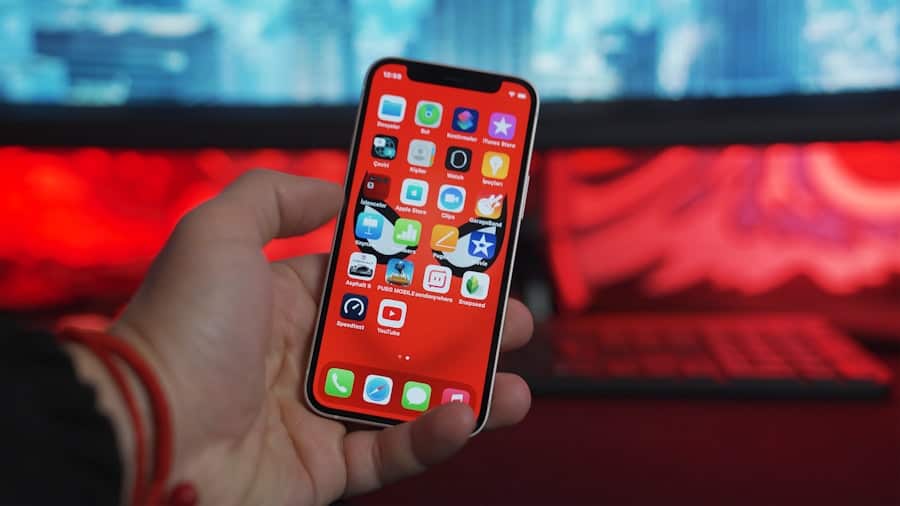The advent of the Internet of Things (IoT) has revolutionized various sectors, and the fitness industry is no exception. IoT-connected fitness equipment refers to devices that are embedded with sensors, software, and other technologies that enable them to connect to the internet and communicate with other devices. This connectivity allows for real-time data collection, analysis, and sharing, which can significantly enhance the workout experience.
As more individuals seek to maintain their health and fitness from the comfort of their homes, the demand for smart fitness equipment has surged. This trend is not merely a passing fad; it represents a fundamental shift in how people approach fitness and wellness. The integration of IoT technology into fitness equipment has transformed traditional workout routines into interactive experiences.
Users can now access a wealth of information about their performance, receive personalized feedback, and even engage with virtual trainers. This connectivity fosters a sense of community among users, as they can share their progress and challenges with others through social media platforms or dedicated fitness apps. As we delve deeper into the benefits and functionalities of IoT-connected fitness equipment, it becomes clear that this technology is reshaping the landscape of home workouts.
Key Takeaways
- IoT-connected fitness equipment allows for seamless integration with other devices and platforms, providing real-time data and insights for a more personalized workout experience.
- The benefits of IoT-connected fitness equipment for home workouts include improved tracking and analysis of workouts, personalized training programs, and the creation of a connected fitness ecosystem.
- Examples of IoT-connected fitness equipment include smart treadmills, connected stationary bikes, and wearable fitness trackers that sync with mobile apps and other devices.
- IoT-connected fitness equipment tracks and analyzes workouts through sensors that monitor movement, heart rate, and other biometric data, providing valuable insights for users and trainers.
- Integrating IoT-connected fitness equipment with personalized training programs allows for customized workout plans, real-time feedback, and the ability to track progress and set new goals.
Benefits of IoT-Connected Fitness Equipment for Home Workouts
One of the most significant advantages of IoT-connected fitness equipment is the ability to track performance metrics in real-time. This feature allows users to monitor their heart rate, calories burned, distance traveled, and other vital statistics during their workouts. For instance, a smart treadmill can provide instant feedback on running speed and incline, enabling users to adjust their intensity on the fly.
This immediate access to data not only enhances motivation but also helps individuals make informed decisions about their training regimens. Moreover, IoT-connected fitness equipment often comes equipped with advanced analytics capabilities. By collecting data over time, these devices can identify trends in a user’s performance, such as improvements in strength or endurance.
This information can be invaluable for setting realistic goals and tracking progress. For example, a smart bike may analyze a user’s cycling patterns and suggest personalized training plans based on their performance history. Such tailored recommendations can lead to more effective workouts and ultimately better results.
Examples of IoT-Connected Fitness Equipment
The market is flooded with various types of IoT-connected fitness equipment designed to cater to different workout preferences and goals. Smart treadmills, for instance, have become increasingly popular due to their ability to simulate outdoor running experiences through interactive screens that display scenic routes. Brands like Peloton have taken this concept further by incorporating live streaming classes that allow users to compete with others in real-time, creating an engaging workout environment.
Another notable example is smart wearable devices such as fitness trackers and smartwatches. These gadgets not only monitor physical activity but also provide insights into sleep patterns, stress levels, and overall health metrics. Devices like the Fitbit Charge series or the Apple Watch have integrated features that allow users to set goals, receive reminders for activity, and even track hydration levels.
The data collected by these wearables can be synced with other fitness equipment, creating a comprehensive view of an individual’s health journey.
How IoT-Connected Fitness Equipment Tracks and Analyzes Workouts
The tracking capabilities of IoT-connected fitness equipment are powered by a combination of sensors and software algorithms. Sensors embedded in the equipment collect data on various parameters such as movement, speed, resistance levels, and heart rate. For example, a smart rowing machine may utilize motion sensors to detect stroke frequency and power output, providing users with detailed feedback on their rowing technique.
Once the data is collected, it is transmitted to cloud-based platforms where sophisticated algorithms analyze it. These platforms can generate reports that highlight performance trends over time, allowing users to visualize their progress through graphs and charts. Additionally, many devices offer integration with third-party applications that further enhance data analysis capabilities.
For instance, a user might sync their smart scale with a nutrition app to correlate weight changes with dietary habits, providing a holistic view of their health.
Integrating IoT-Connected Fitness Equipment with Personalized Training Programs
Personalization is a key feature of IoT-connected fitness equipment that sets it apart from traditional workout methods. Many devices come equipped with AI-driven software that can create customized training programs based on individual goals and fitness levels. For example, a smart elliptical machine may assess a user’s current fitness level through initial assessments and then generate a tailored workout plan that gradually increases in intensity.
Furthermore, these personalized programs can adapt in real-time based on user performance. If a user consistently exceeds their target heart rate during workouts, the system may automatically adjust future sessions to ensure they remain within optimal training zones. This dynamic approach not only keeps workouts challenging but also helps prevent plateaus in progress.
The Role of IoT-Connected Fitness Equipment in Creating a Connected Fitness Ecosystem
The concept of a connected fitness ecosystem extends beyond individual devices; it encompasses an entire network of interconnected tools and platforms that work together to enhance the user experience. IoT-connected fitness equipment can seamlessly integrate with smartphones, tablets, and other smart devices, allowing users to access their workout data anytime and anywhere. This connectivity fosters a holistic approach to fitness by enabling users to track their progress across multiple platforms.
Moreover, social features are often built into these ecosystems, allowing users to connect with friends or join virtual communities. Many fitness apps offer challenges or leaderboards that encourage friendly competition among users. This social aspect can significantly boost motivation and accountability, as individuals are more likely to stick to their routines when they feel part of a community.
Considerations for Choosing IoT-Connected Fitness Equipment for Home Use
When selecting IoT-connected fitness equipment for home use, several factors should be taken into account to ensure that the investment aligns with personal fitness goals and lifestyle preferences. First and foremost is compatibility; it is essential to choose devices that can easily integrate with existing technology such as smartphones or smart home systems. Compatibility ensures that users can access all features without technical difficulties.
Another critical consideration is the type of workouts one intends to perform. Different devices cater to various fitness activities; for instance, someone focused on strength training may benefit more from smart weights or resistance bands than from cardio machines like treadmills or stationary bikes. Additionally, evaluating the quality of customer support and software updates from manufacturers can provide peace of mind regarding long-term usability and functionality.
The Future of IoT-Connected Fitness Equipment and Home Workouts
As technology continues to evolve at an unprecedented pace, the future of IoT-connected fitness equipment looks promising.
Imagine cycling through scenic landscapes or participating in virtual group classes where participants feel as if they are in the same room despite being miles apart.
Moreover, advancements in artificial intelligence will likely lead to even more sophisticated personalization features. Future devices may be able to analyze not just physical performance but also emotional states through biometric feedback, allowing for workouts tailored not only to physical capabilities but also mental readiness. This holistic approach could redefine how individuals engage with fitness, making it more accessible and enjoyable than ever before.
As this technology continues to advance, it will undoubtedly play a pivotal role in shaping the future of health and wellness for individuals around the globe.
If you are interested in enhancing your home workouts with IoT-connected fitness equipment, you may also want to check out this article on Mobility 2021. This article discusses the latest trends in mobility technology and how it can improve your overall fitness routine. By staying informed on the latest advancements in fitness technology, you can ensure that your home workouts are as effective and efficient as possible.
FAQs
What is IoT-connected fitness equipment?
IoT-connected fitness equipment refers to exercise machines and devices that are equipped with sensors and connectivity capabilities to collect and transmit data. This data can include workout metrics, user performance, and equipment status.
How does IoT-connected fitness equipment enhance home workouts?
IoT-connected fitness equipment enhances home workouts by providing real-time feedback on performance, personalized workout recommendations, and the ability to track progress over time. This can help users stay motivated and make informed decisions about their fitness routines.
What are some examples of IoT-connected fitness equipment?
Examples of IoT-connected fitness equipment include smart treadmills, connected stationary bikes, sensor-equipped strength training machines, and wearable fitness trackers. These devices can sync with mobile apps or online platforms to provide a comprehensive fitness experience.
What are the benefits of using IoT-connected fitness equipment for home workouts?
The benefits of using IoT-connected fitness equipment for home workouts include improved motivation, personalized training programs, accurate performance tracking, and the ability to seamlessly integrate with other smart devices and fitness apps. This can lead to more effective and enjoyable workout experiences.
Are there any privacy or security concerns with IoT-connected fitness equipment?
Privacy and security concerns with IoT-connected fitness equipment may arise from the collection and storage of personal workout data. Users should ensure that the devices they use have robust security measures in place to protect their information and consider the privacy policies of the manufacturers and service providers.



